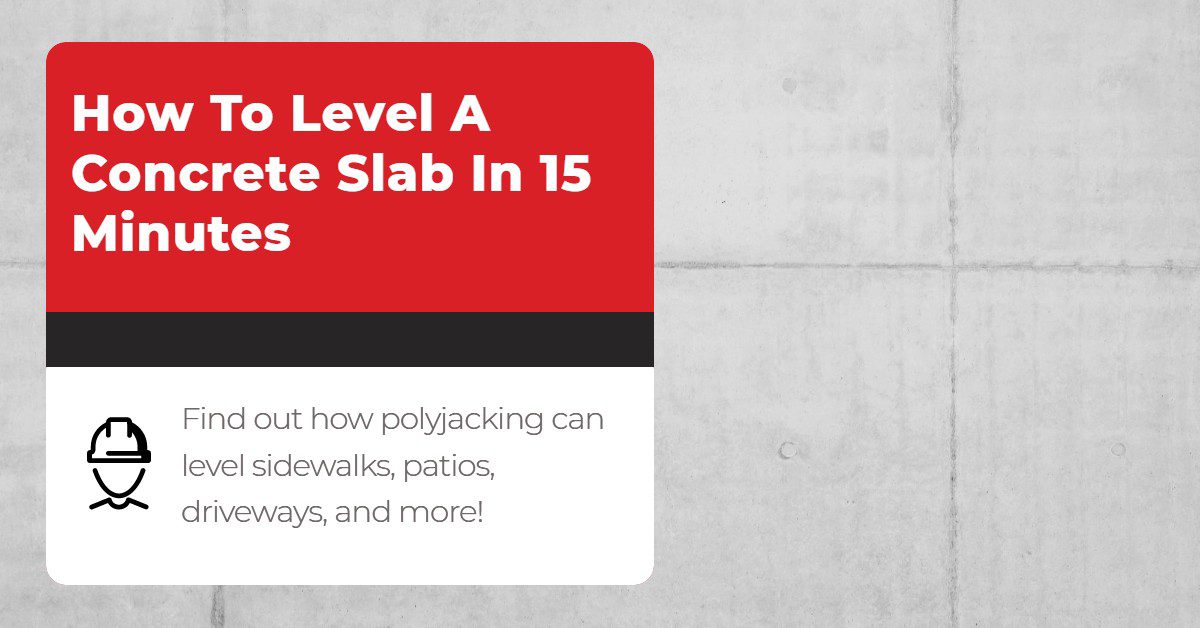If you want to know how to level a concrete slab in just 15 minutes, you’re in the right place. This article will teach you how concrete lifting foam, also known as polyjacking, can level sidewalks, patios, driveways, and more. First, let’s talk about why concrete slabs sink.
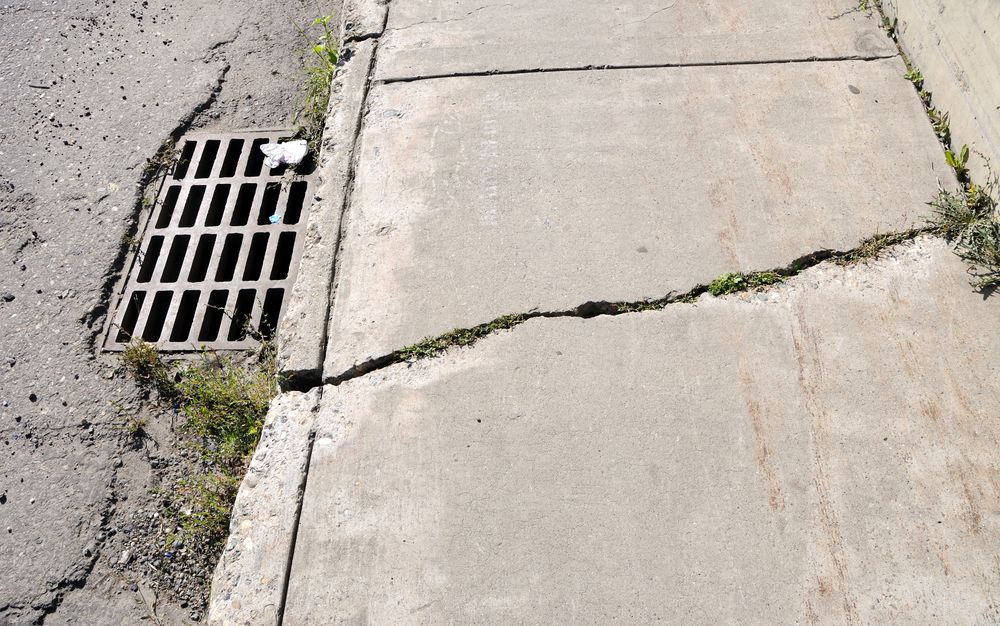
Why Do Concrete Slabs Sink?
There are many reasons why concrete slabs sink. Some of those include:
- Poor drainage – Poorly placed gutters can spill water too close to your home. When water constantly flows underneath your slab, the soil can wash out.
- Poor compaction – Soil compaction is when dirt is packed together so that there are no spaces between the soil particles. If the soil laid underneath the slab was improperly compacted, the slab could sink.
- Poor site/soil conditions – You don’t want the soil beneath your slab to be made of too much clay. That type of dirt expands when it gets wet and shrinks when it dries, causing the soil to shift.
- Tree roots – Tree roots search for water in your soil. If water is soaking the soil beneath the slab, tree roots can start to invade, pushing or sinking the concrete.
How To Level A Concrete Slab In 15 Minutes
That’s right. Polyjacked concrete slabs can be used 15 minutes after the foam cures. Lifting a concrete slab works in three steps.
Step 1: Holes the size of a dime are drilled into the concrete slab.
Step 2: Polyurethane foam is injected through the holes underneath the slab.
Step 3: Lastly, the foam will then expand beneath the concrete, lifting the slab.
Once the concrete is back to the maximum practical level, the injection holes and cracks are patched. Contractors will also clean any excess foam sticking out from under the slab.
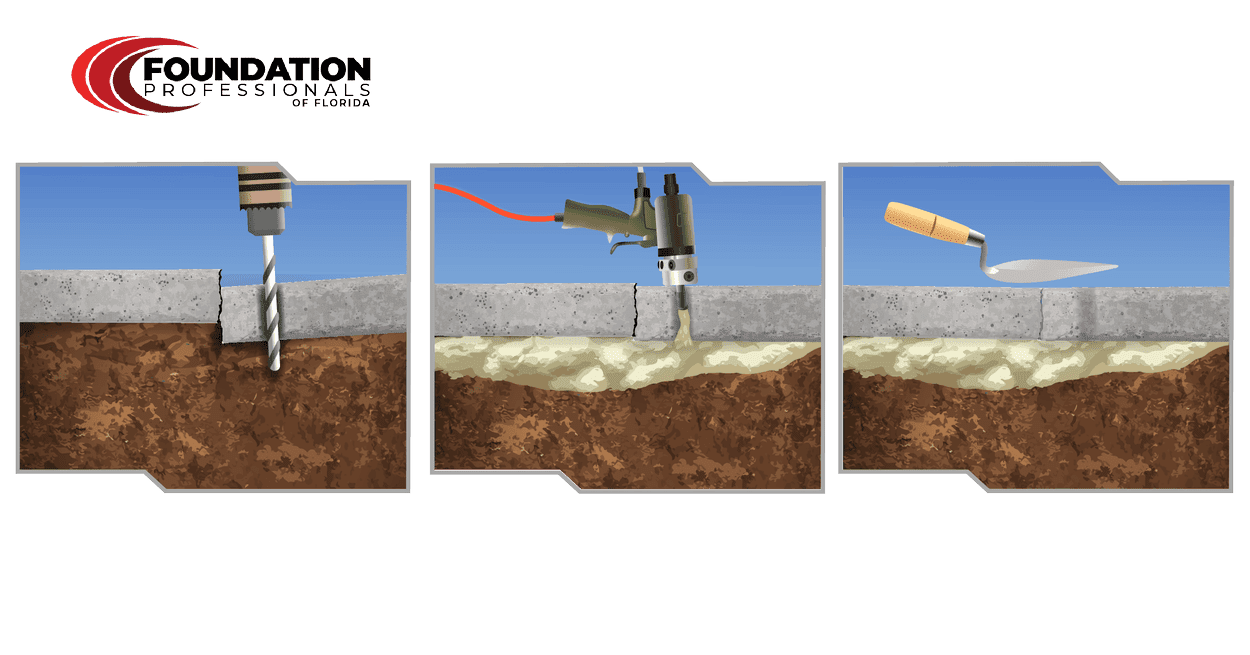
Benefits Of Concrete Lifting Foam
If you still have any doubts about using polyjacking, here are some key benefits you should know.
- Fast-acting – Just 15 minutes after the foam is injected, you can walk or drive on the raised concrete.
- Minimally-Invasive – No excavation is required to lift sunken concrete slabs when you use polyjacking.
- Lightweight – Concrete lifting foam only weighs about 2.5 to 4.0 pounds per cubic foot. The foam won’t add to future settlement.
- Environmentally-Friendly – Concrete lifting foam does not affect soil or grass. You don’t need to worry about it killing your yard.
- Waterproof – Concrete lifting foam is hydrophobic, meaning it will still harden and stay hard if it comes in contact with water.
Concrete lifting foam is also cost-effective. Replacing concrete involves expenditures that add up. These include:
- Chipping away the old slab.
- Hauling away the debris.
- Bringing in concrete trucks.
- Pouring the new concrete.
- Waiting for the new slab to dry.
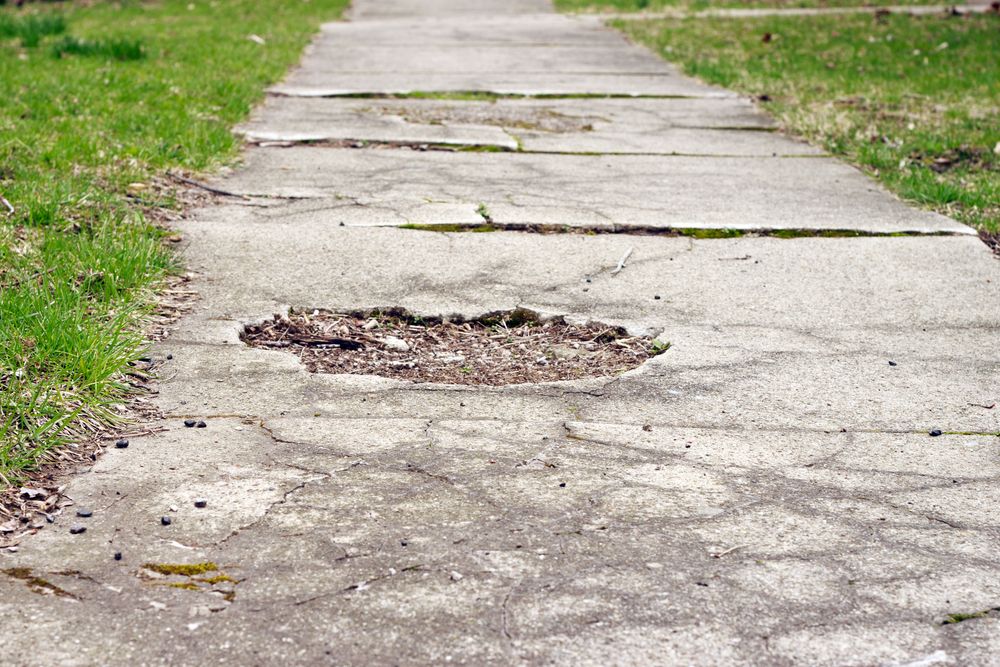
Concrete Lifting Foam Vs. Mudjacking
Mudjacking is an outdated form of lifting concrete slabs. So old, it dates back to 1930! Mudjacking comes with five major cons.
- It’s heavier – Mudjacking uses sand, cement, and other natural materials to make a mixture known as a slurry. The combination is extremely heavy, weighing on average 100 pounds per cubic foot. You already had a sinking concrete. Now, you’ll just have more sinking soil.
- It requires a lot of cleanup – Mudjacking needs a lot of cleanup. The slurry that is pumped under the slab creates a huge mess. Not to mention the trucks that need to bring in the mixture.
- The slurry is weak – The mix of sand, cement, and other materials that make up mudjacking, will wash away.
- It needs larger holes – Pumping the slurry into your slab requires 2-inch holes that can crack your concrete. Weeds like to use the holes to grow out of as well.
- It’s temporary – Mudjacking only lasts 2 to 5 years, while polyjacked slabs last indefinitely.
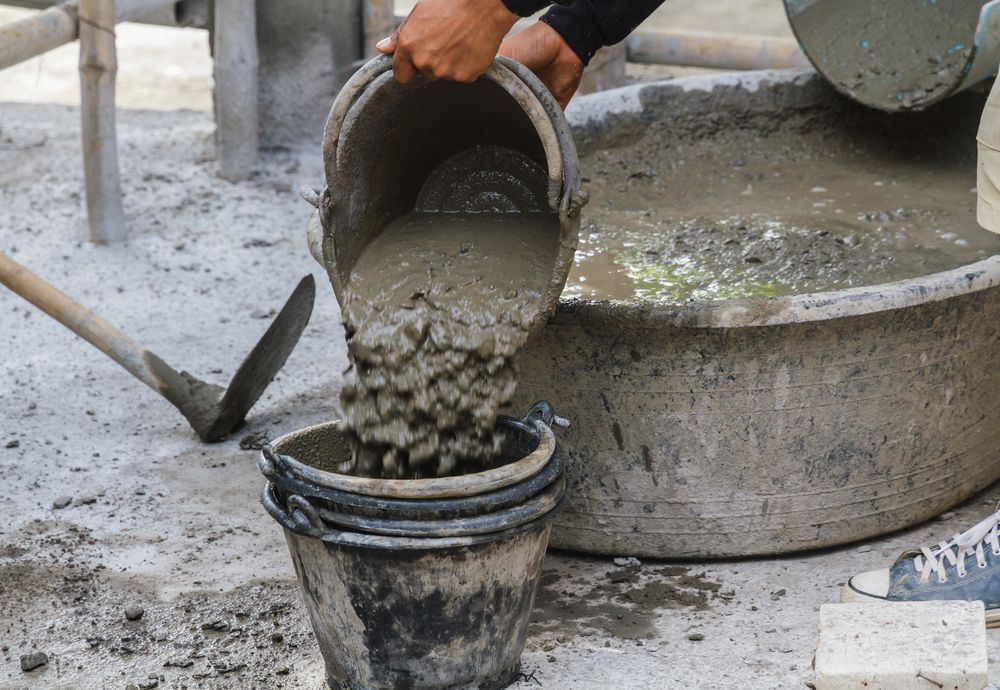
Other Uses Of Concrete Lifting Foam
Concrete lifting foam has a few other uses besides lifting slabs. Those include:
- Void filling – Concrete lifting foam fills in any voids below your slab. Even if water tries to wash away the foam, the voids will stay filled.
- Joint/Slab stabilization – If you want to support a frequently used driveway, polyacking can add extra strength to the structural integrity.
- Seawall repair – Home’s on lakes or by the ocean come with seawalls. Over time, waves can erode the concrete and put your home at risk. With polyjacking foam, you can save a fortune filling in voids and cracks rather than replacing the entire wall.
For more information see, Concrete Slab Cracks In Your Florida Home.
Slab Lifting With Foundation Professionals Of Florida
If you need a sidewalk, driveway, patio, or any other concrete slab lifted, who should you call? Get in touch with Foundation Professionals of Florida! We’re an award-winning and top-performing company servicing Florida, Georgia, Alabama, Mississippi, Louisiana, Tennessee, Kentucky, North Carolina, South Carolina, Virgin Islands, and the Florida Keys. We also provide foundation repair, basement waterproofing, crawl space repair, and more.

